Tibetan highland is the largest and most elevated in the world. Almost in every places it raises above 4 kilometers, and even more impressive is the fact that the highland is a vast space that could fit the whole state of Mexico or Kazakhstan, not just a separate mountain peak or chain. The easiest way to imagine Tibet is to think of an oval table of a great hight standing on the “floor” of Eurasia. It is so high that even the highest mountains of the world, the Himalayas and Kunlun ranges — seem small when looking from the highland, while from below, from the plains they look like impassable walls several rises up kilometers high. The ridges within the Tibetan plateau also look modest, almost like home, while their absolute height reaches 6-7 kilometers.
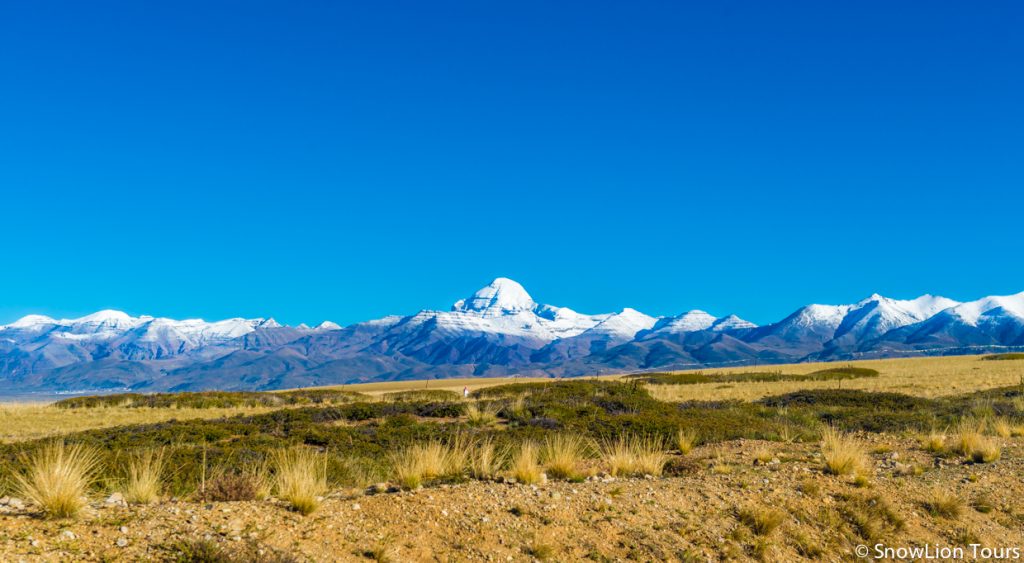
Distance view of Mount Kailash
If one looks from space, the “tablecloth” on the “table” has three coloured areas: in the middle there is yellow-green steppe, in the North-West terracotta desert, and in the East a patchwork of snow, dark green forests and emerald meadows.
Central, Southern and North-Eastern Tibet
Endless green meadows where yaks and antelopes sweep past the trains heading to Lhasa, and the mountains are barely visible in the haze on the horizon. The grass is filled with water so that reflections of the sky appear here and there. It has nowhere to flow though: the permafrost is hidden under the ground making something in between a meadow and a swamp. But the water still moves slowly. First transparent streams merge with each other, and out of them, like out of the wizard’s sleeve, appear the great Asian rivers: Yellow River, Yangtze, Mekong, Salween, and Brahmaputra. This landscape occupies the entire central part of Tibet from the Himalayas to Nanshan Mountains. World-famous inhabited sites of Tibet are located here. And inhabited does not mean there are many people in the area. In fact, it’s hard to see people he countryside.
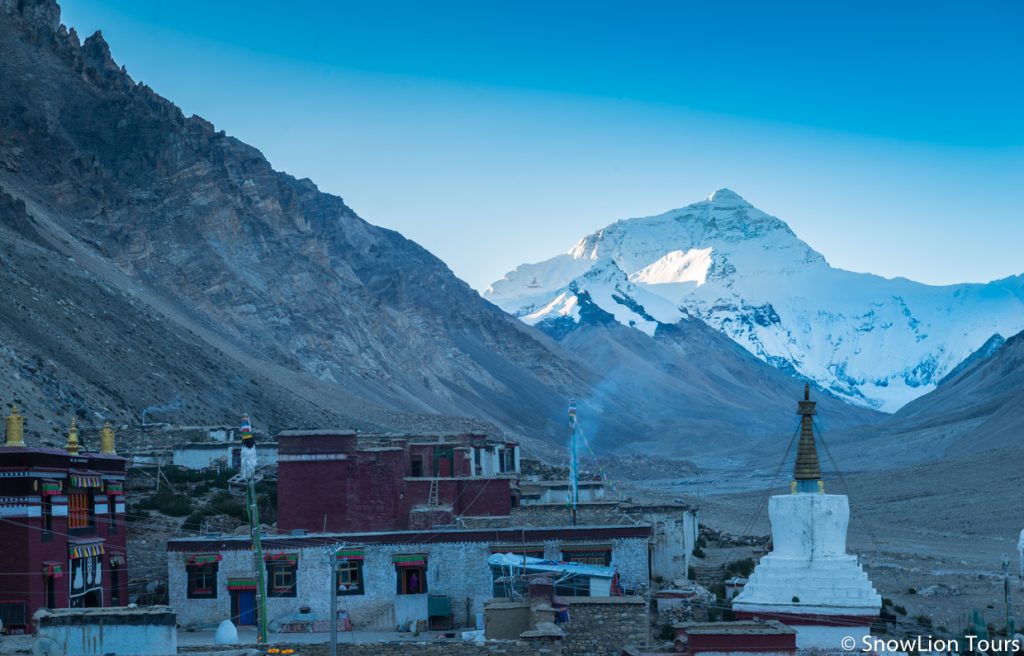
Mount Everest from Rongbuk Monastery
High plateau is worth high borders. A continuous chain of the Himalayas goes through Tibet in a long arc from the South. But the great rivers of Asia were slowly able to get through this barrier, so that the highest mountains of the world, oddly enough, are not a watershed. Previously where Tibet is there was just a plain with small mountains. Relatively recently in the geological sense the Indian tectonic plate came from the South and began to crawl under the Eurasian. This elevated Tibet over the clouds. At that time the highest mountains of the world — the Himalayas also began to rise. This was already during the age of mammoths. The Himalayas are still growing, generating earthquakes, letting out hot springs and radon from the depths to the surface.
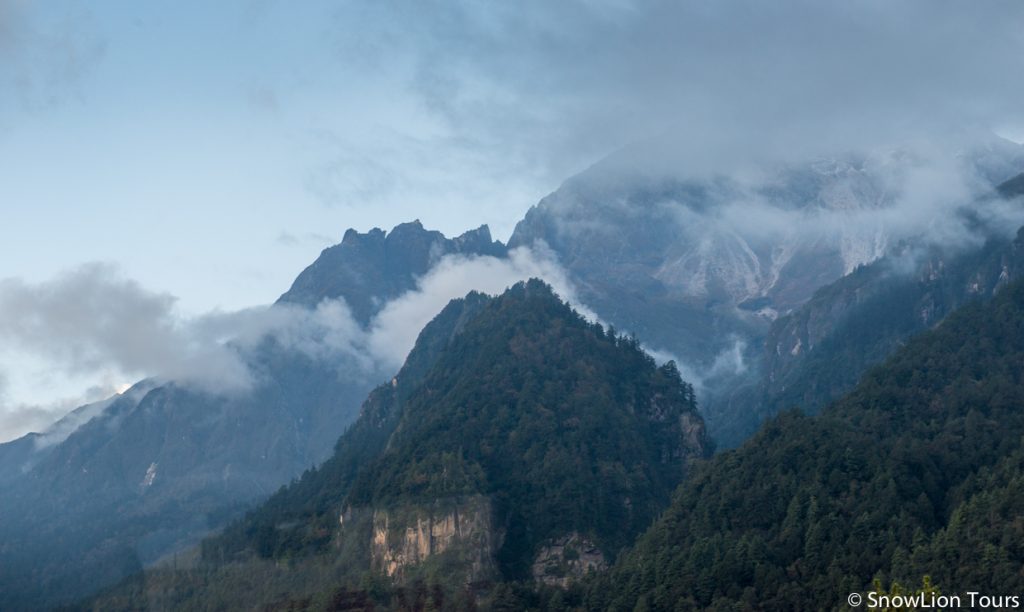
Mountain at the border between Tibet and Nepal
Anyone who has seen the majestic peaks of the Himalayas from India and Nepal, can not help but let out a surprise when looking at them from Tibet. The mountains are still high and icy, but it looks like someone hid many kilometers of foothills with luxurious forests, leaving only cold peaks. “The next day, reaching the top of the pass, we were surprised to find that there is no descent. It seemed we were looking into infinity that is impossible to cross. There were no signs of life anywhere, only a cold wind blew through the land.” – this is how the pass through the Himalayas is described in the book Seven years in Tibet. And it is really how it feels.
Mountain system, which is a home to Kailas, a mountain sacred for followers of four religions cannot escape world-wide fame. The Trans-Himalayas are several ridges North of the Himalayas which extend in the same direction, from East to West. To the north there are cold deserts of Changtang highlands, and to the South, near Himalayas and the Nepalese border are lower and more populated areas, but even there, the life of Tibetan herdsmen is quite harsh. Yet, the severe climate does not stop thousands of pilgrims who come to make kora, ritual circumambulation around Kailas.
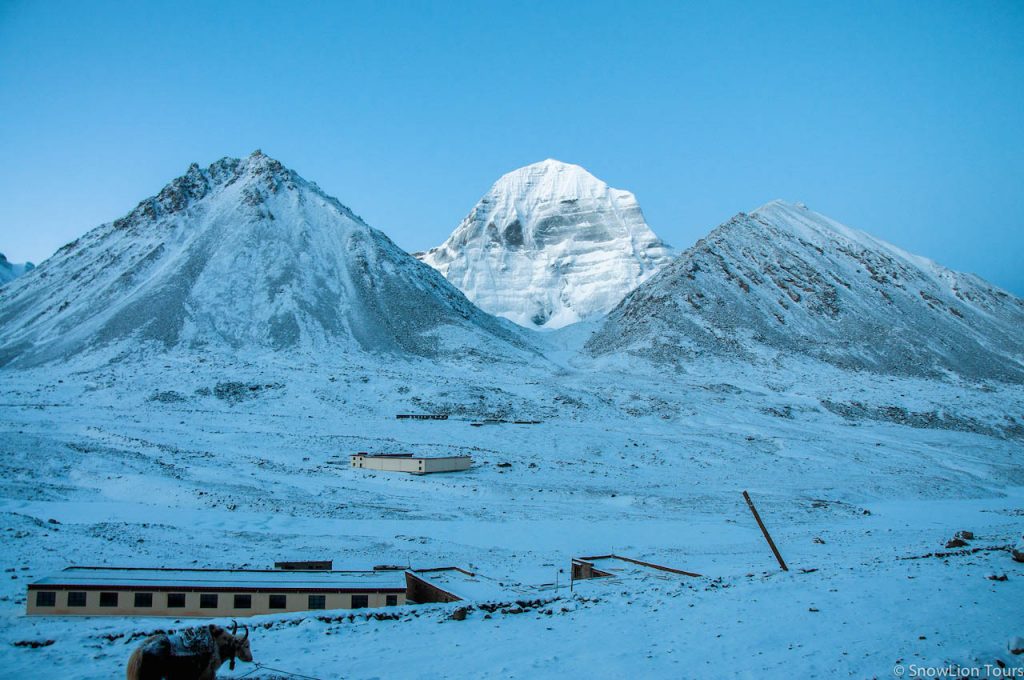
Mount Kailash from Dirapuk Monastery, the second day of Mount Kailas Kora
Hindus believe that Kailas is the abode of Siva and that four great rivers flow down from the river. This is an exaggeration: all water from the top of Kailas flows only to one river Sutlej through lake Langatso. The other three rivers, although relatively close, receive their water from the other peaks of the Trans-Himalaya.
Tangla Range
Snow-capped peaks of the six thousand meter high Tangla Ridge divide Tibet into the Northern and Southern halves. It also serves as the administrative boundary between the Tibetan Autonomous Region (in the South) and the province of Qinghai (in the North). Tibetans on both sides of the ridge are so different that they even speak different dialects. Although the ridge does not look very large and in many places it is easy to cross, world’s highest point of the railway to Lhasa (5231 m) also lies here. The easiest way to have an outer space experience without actually getting into space is simply to getting out of the car on the way to Lhasa on the Tangla pass. Few minutes are enough.
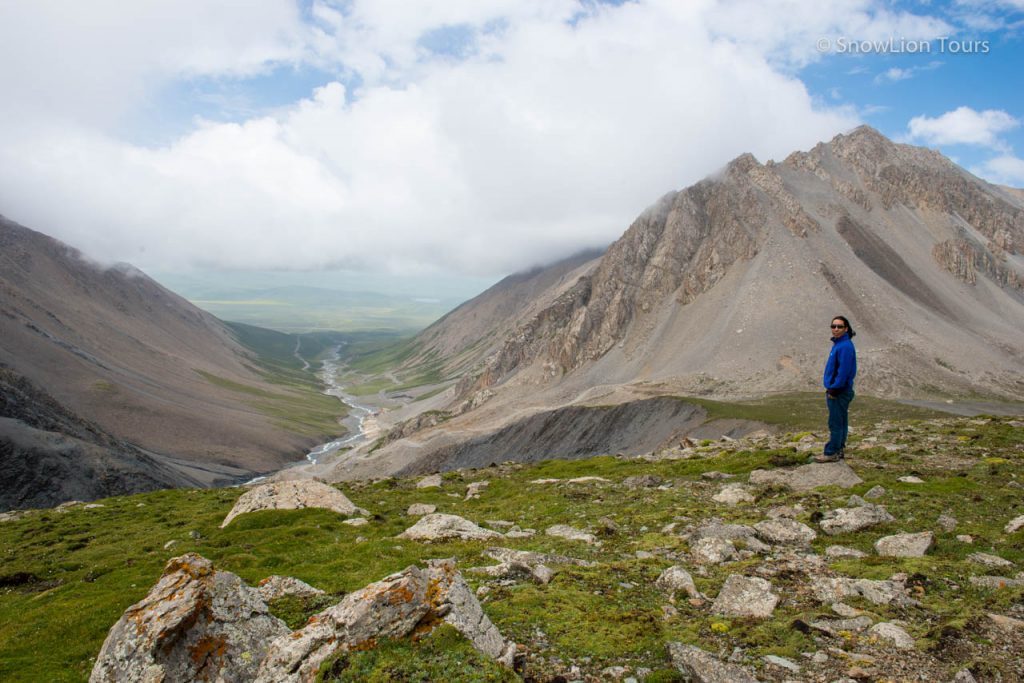
Dola mountain or Qilian Shan range in Qinghai Province
North-Eastern Tibet seems to end with a vast desert in the Tsaidam depression. Historically here was the main road to Tibet from China and Mongolia, and now there is a highway and a railway. But before the desert starts, last mountains of Tibet — the Nanshan rise to the North. They’re unusually green. In the mountains one can be see both traditional Tibetan steppe and spruce forests, and most importantly, the landscapes of Zhangye-Danxia, which these mountains are known all over the world. These are natural bands of multi-colored rocks looking almost like a rainbow, covering tens of kilometers of mountains. It feels like you’re in a giant kaleidoscope. Behind Nanshan the plains begin.
Changtang Plateau
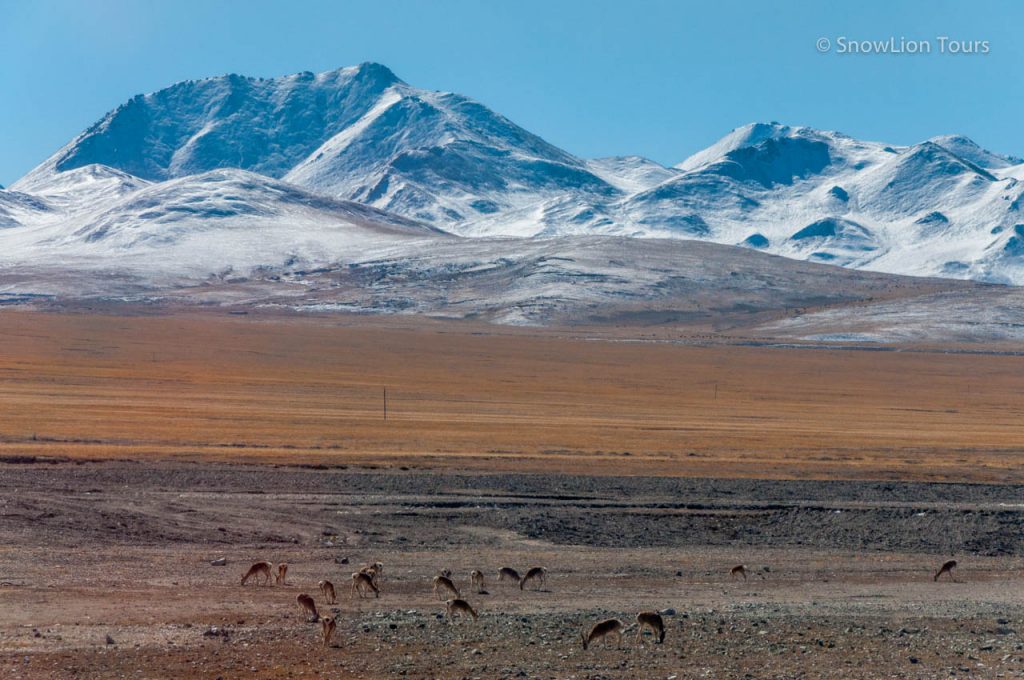
Changtang Plateau
The largest North-Western part of Changtang – the “table” of Tibet is covered with a blue lakes spread among lifeless beige and terracotta coloured desert. There are still no cities or people here. To get deep into the Changtang is not easier than into Antarctica. There is only one way from Uighur lands to Lhasa (Western Tibet highway) that crosses the border zone of this vast region. It is one of the most inhospitable places on Earth, but that’s why it is so attractive: a lot of wild animals that are easy to see even from the road on the endless plains, and a unique stunning sky, which one who saw it can never forget.
Kunlun Mountain Range
At the Northern edge of Changtang (and Tibet) there are the Kunlun mountains with steep cliffs and almost as long as the Himalayas. These are high mountains with very dry climate. People don’t live here. Towns and cities begin only on the plain in the oases of Uighur lands.
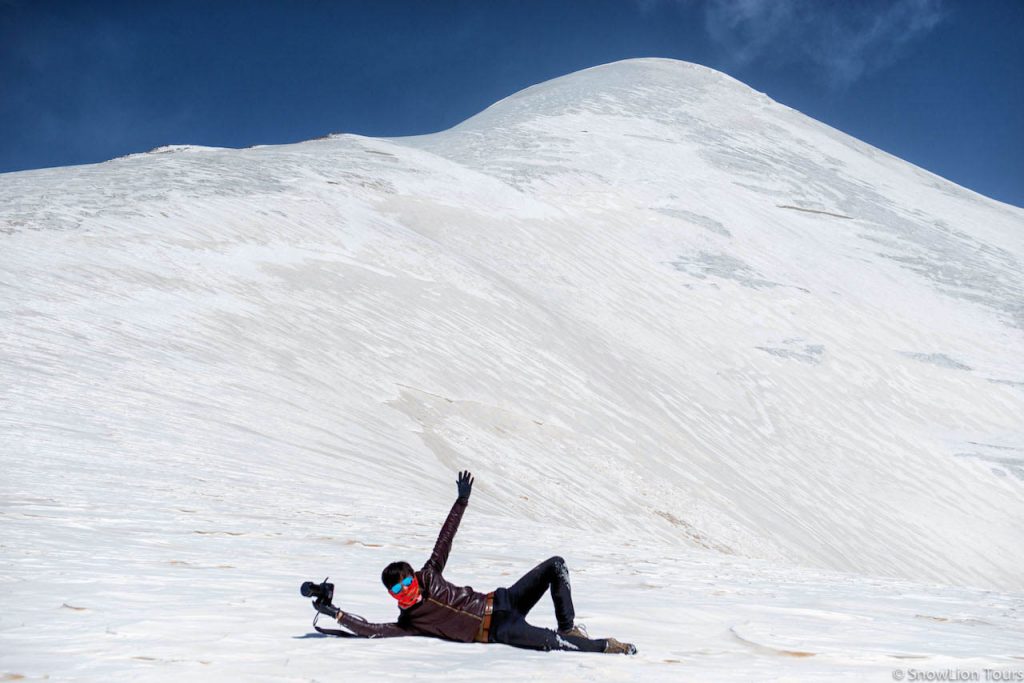
One of our colleague is posing a photo at an elevation of 6100m above sea level on top of Yuzhu Peak
To the East, Kunlun does not descend, only becomes greener, and the place where it is crossed by the railway to Lhasa it is very picturesque, although the climate is still harsh. And on the southern edge there is a new road leading to the South of Qinghai province. Geographically it is already within Tibetan heights, but it is much easier to get here than to Lhasa. In recent years, cyclists have been using this scenic road instead of the Hexi corridor to get from Central Asia to the plains of China.
Eastern Tibet
The edges of Tibet are inevitably getting crushed under their enormous weight. From the north and the south they are supported by Kunlun and the Himalayas, but from the east there is nothing like that, and giant blocks slowly break away. At first it is very hard to see anything but huge valleys of the great rivers separated by high ridges, but closer to the edge the begins an enthralling world of scattered valleys and plateaus.
Each plateau is a separate wonderland – with cities, villages, forests, fields and lakes. Wildly flowing rivers make their way between them. The deepest gorges form. Until the mid-twentieth century, these lands were almost unreachable, and even now two neighboring plateaus might be inhabited by different ethnic groups.
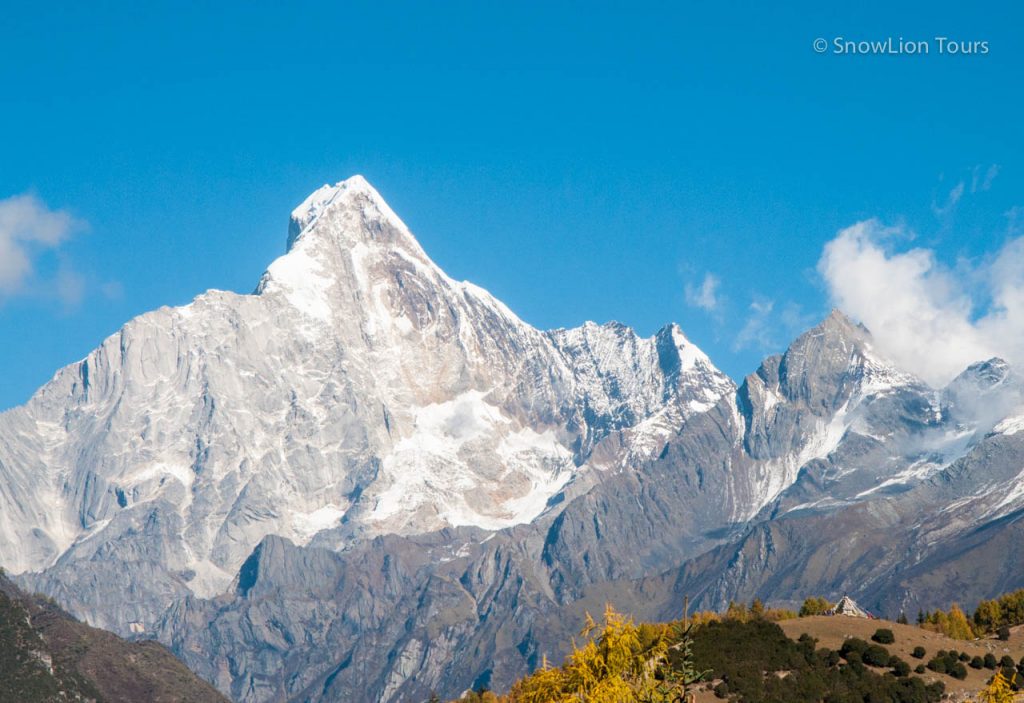
Mount Siguniangshan or four sister mountain in Sichuan Province
This is the most picturesque part of the “table” of Tibet – Kham and Sichuan Alps. From space one can see snowy “stars” on top of the highest ridges alternating with deep wooded gorges.
Sichuan Alps (Sino-Tibetan mountains or Hengduanshan)
Sichuan Alps are called the land of high peaks and deep gorges. These mountains are amazing. Although inhabited areas seem to be close at hand, and the land has been studied from top to bottom, but there are still new peaks put on the map. That is because in Sichuan Alps in the East of Tibet very high peaks alternate with steep slopes, forming impassable valleys up to three kilometers deep. The great rivers of Asia converge here and flow within only a few tens of kilometers from one another.
Slopes and glaciers feature severe climate similar to Himalayan. Although the mountains are not a solid wall and the path through them from China to Tibet is the shortest, but due to the chaos of impassable gorges it’s also the most beautiful and difficult to go through.
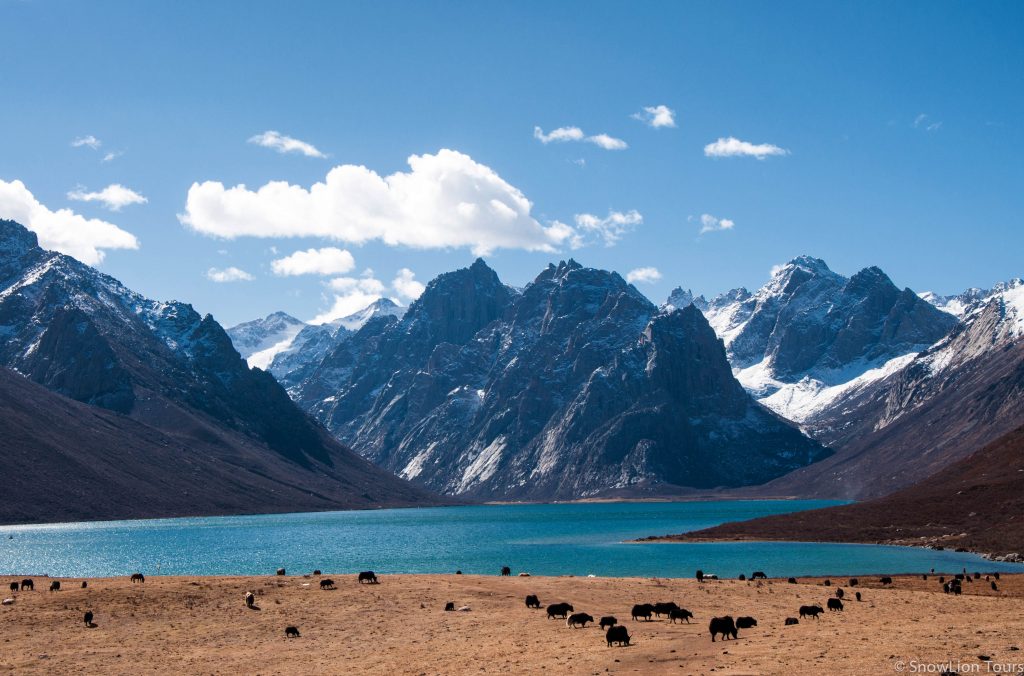
Mount Nyembu Yultse and Fairy Lake
The zest of these impenetrable labyrinths (aside from their mere presence) is the widest in Asia variety of animals and birds. A little further South in Yunnan province there are the world famous Jumping Tiger Gorge rapids, the scenery with bubbling water cascades (that you can fortunately see from a safe spot) is literally breathtaking.





